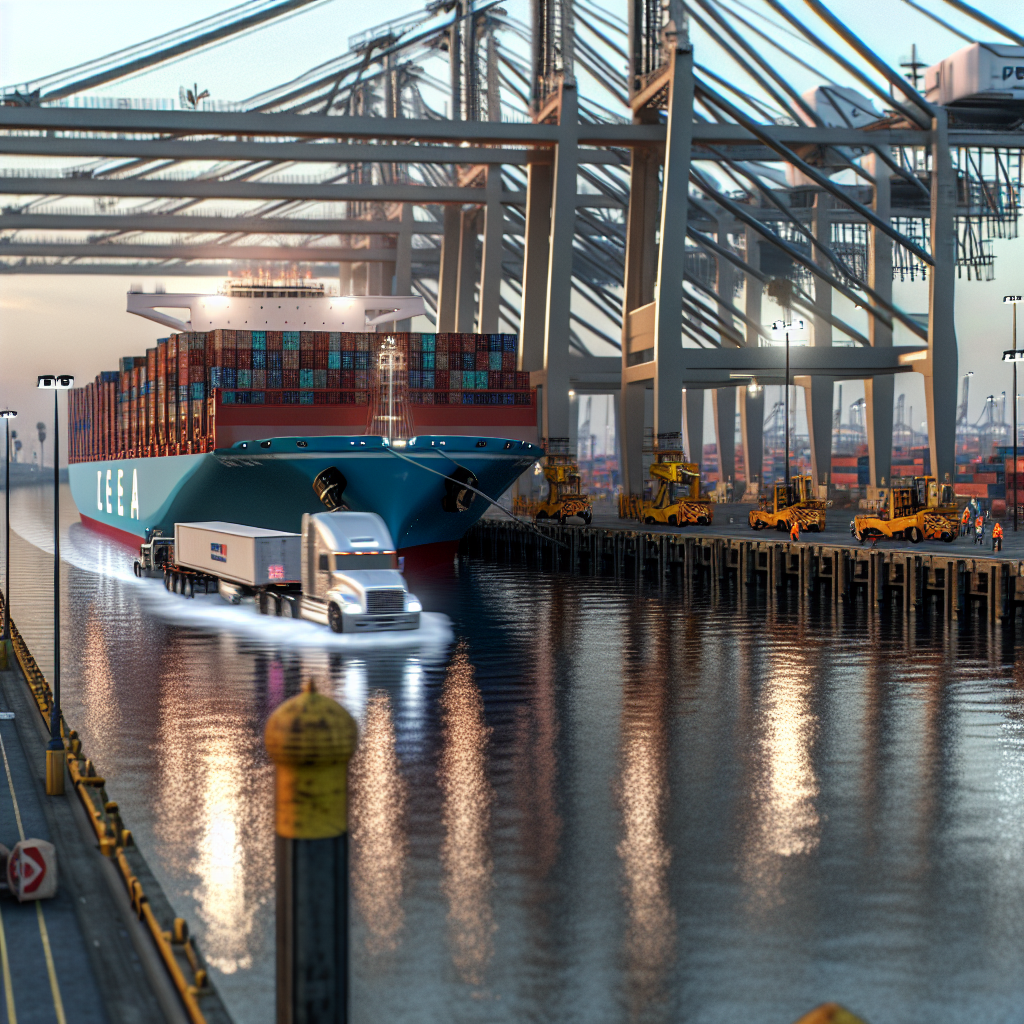The nation’s busiest container gateway is mapping out a brand-new terminal built for the era of ultra-large ships. The Port of Los Angeles has invited proposals for a public‑private pre‑development agreement on “Pier 500,” a 200‑acre, two‑berth container complex planned along the Pier 400 Channel at the southern tip of Terminal Island. The port says the site’s natural deep water and roughly 3,000 linear feet of new wharf would allow it to handle “next‑generation” vessels while pushing efficiency and sustainability standards higher.
What’s different this time is the sequencing. LA isn’t awarding a build contract; it’s first selecting a partner to test the business case, pursue entitlements and complete environmental work before any shovels hit the ground. The request for proposals (RFP) sets a deadline of January 29, 2026, and outlines a roughly 10‑year arc from pre‑development through full build‑out and operations if approvals remain on track. For trucking fleets that plan capital and hiring years ahead, the takeaway is timing: any Pier 500 cargo would arrive in the 2030s, not next peak season.
The location matters for drayage. Pier 500 would sit just south of Pier 400, the port’s largest terminal, leveraging 124 acres of submerged land placed during Pier 400’s construction. That positioning keeps heavy trucks close to established gate complexes and freeway spurs, minimizing greenfield roadbuilding. If the final design bakes in robust on‑dock rail — a decision the pre‑development phase will shape — expect a higher share of boxes to move by train, cutting local truck‑miles while concentrating drayage demand at nearby intermodal yards.
For drivers and dispatchers, the near‑term impacts are subtle but real. A new terminal built around megaship calls will concentrate surges: thousands more boxes may hit gates within compressed windows when 20,000‑plus‑TEU vessels cycle. That favors motor carriers with flexible labor, chassis access and appointment discipline. It also raises the stakes on night and weekend gates, dual transactions and street‑turn programs to protect turn times when the biggest ships arrive. Those operational choices will be hammered out over the next several years with the selected pre‑development partner and terminal operator.
Policy and permitting will drive the project pace. The port emphasized that the pre‑development process will run through both CEQA and NEPA reviews, which means community outreach, air‑quality modeling and mitigation planning are on the critical path. For trucking, that points to an eventual terminal design that is stricter on emissions — more shore power, more electric yard equipment and likely expanded charging infrastructure that could also benefit zero‑emission drayage staging nearby.
The move comes as LA signals it wants to preserve its lead on the West Coast and avoid the whiplash that comes with volume swings. Industry coverage of the RFP underscores that Pier 500 would be the first entirely new container terminal proposed at the port in a generation, adding berth length and backland that LA cannot easily create elsewhere within its footprint. For shippers it’s optionality; for truckers it’s more gates, more appointments — and a new node in the San Pedro Bay network to watch as pre‑development unfolds.
Next steps: bidders have through late January to submit, after which the port will pick a partner to begin the entitlement and environmental marathon. Keep an eye on design details that directly affect trucking — on‑dock rail capacity, gate layout, appointment systems and drayage staging — as those choices will determine whether Pier 500 ultimately smooths or spikes truck demand when the megaships tie up.
Sources: FreightWaves, Port of Los Angeles, The Maritime Executive, MyNewsLA
This article was prepared exclusively for TruckStopInsider.com. Republishing is permitted only with proper credit and a link back to the original source.




